A 3-way dimmer switch allows control of lighting from multiple locations‚ enhancing flexibility and energy efficiency. It enables smooth dimming‚ creating ambiance while saving energy. Wiring diagrams are essential for proper installation‚ ensuring safety and functionality.
1.1 What is a 3-Way Dimmer Switch?
A 3-way dimmer switch is a device that allows control of a light fixture from two different locations while also enabling brightness adjustment. It combines the functionality of a standard 3-way switch‚ which permits control from multiple points‚ with the added feature of dimming. This switch is equipped with an electronic unit that regulates the power supply to the light‚ providing smooth dimming capabilities. The switch is typically pre-wired with color-coded leads—green for grounding‚ red for travelers‚ and black for power or the switch leg—facilitating easier installation. It is designed to handle specific wattages‚ such as 600‚ 800‚ or 1000 watts‚ ensuring safe operation without overloading. Compatibility with light fixtures is crucial‚ as not all bulbs or fixtures support dimming‚ particularly older fluorescent or CFL options. Proper selection and installation are essential to avoid issues like overheating or premature bulb failure.
1.2 Benefits of Using a 3-Way Dimmer Switch
The 3-way dimmer switch offers enhanced lighting control‚ allowing adjustment of brightness from two locations. This flexibility creates customizable ambiance‚ improving both convenience and aesthetics. By enabling dimming‚ it reduces energy consumption‚ extending bulb life and lowering utility bills. The switch’s compatibility with various fixtures‚ including LED and dimmable fluorescent lights‚ ensures versatility. Additionally‚ it simplifies installation with pre-wired leads‚ reducing complexity for DIY projects. Overall‚ the 3-way dimmer switch is a practical upgrade‚ combining functionality‚ efficiency‚ and convenience to modernize any space.
1.3 Importance of Wiring Diagrams for Installation
Wiring diagrams are crucial for safe and correct installation of a 3-way dimmer switch. They provide a clear visual guide‚ detailing connections for power‚ travelers‚ and ground wires. Properly following a diagram ensures components function as intended‚ preventing short circuits or electrical hazards. Diagrams also help identify compatible configurations‚ especially when integrating with existing systems or smart home technologies. By adhering to the diagram‚ installers can avoid common mistakes‚ ensuring efficient and reliable operation. Always consult a certified wiring diagram to guarantee a successful and safe installation process.
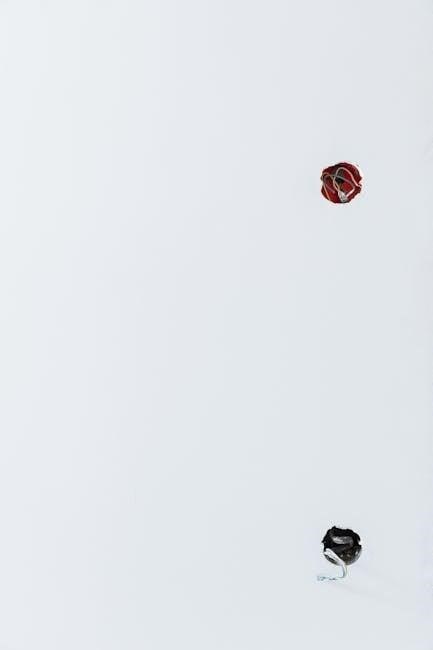
Understanding the Wiring Diagram
A wiring diagram simplifies complex connections‚ showing how travelers‚ power lines‚ and ground wires interact. It visually guides installers through safe and efficient 3-way dimmer configurations.
2.1 Key Components of a 3-Way Dimmer Switch
A 3-way dimmer switch includes a ground wire (green) for safety‚ traveler wires (red) that connect between switches‚ and a power wire (black) linking to the light fixture. These components ensure proper dimming and control from multiple locations. Understanding each part is crucial for safe and effective installation.
2.2 Reading and Interpreting the Wiring Diagram
A wiring diagram provides a clear visual guide for installing a 3-way dimmer switch. It illustrates the connections between the power source‚ traveler wires‚ and light fixtures. By identifying symbols and color-coded wires‚ you can determine how to link components. Understanding the flow of electricity ensures proper dimming functionality. Always verify the diagram matches your setup to avoid errors. Misinterpreting the diagram can lead to faulty connections‚ so careful analysis is essential for a safe and successful installation.
2.3 Common Symbols and Notations Used
Wiring diagrams for 3-way dimmer switches use standardized symbols to represent components. A circle or “C” denotes a connection point‚ while “L” stands for live wires. Arrows indicate the flow of electricity. Colors like green (ground)‚ red (travelers)‚ and black (power/switch leg) are consistent. Understanding these symbols ensures accurate wiring. Notations like “COM” (common) and “L1/L2” clarify connections. Familiarizing yourself with these symbols helps interpret the diagram correctly‚ avoiding errors during installation. This visual language simplifies complex wiring schemes‚ ensuring safety and functionality.
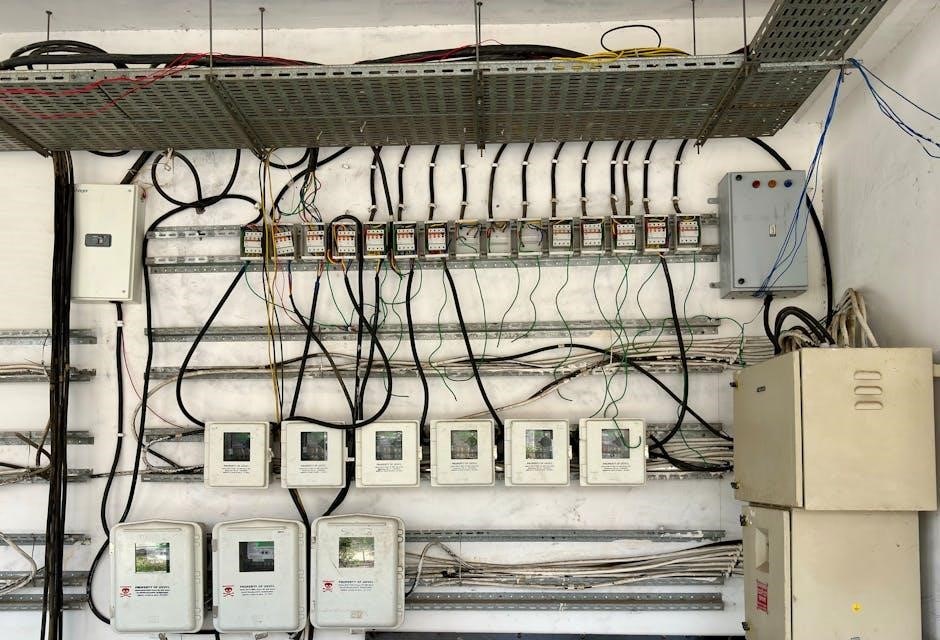
Safety Precautions
Always turn off power at the circuit breaker before starting work. Verify with a voltmeter to ensure no voltage is present. Use protective gear and avoid overloading circuits to prevent hazards.
3.1 Essential Safety Tips for Electrical Work
When handling electrical projects‚ always prioritize safety to avoid accidents. Ensure the power is switched off at the main circuit breaker before starting work. Use a voltmeter to confirm there’s no electricity flowing through the wires to prevent shocks or injuries. Wear protective gear‚ including gloves and safety glasses‚ to safeguard against potential hazards. Never overload circuits‚ as this can cause overheating or fires. Always follow local electrical codes and manufacturer instructions for dimmer switches. If unsure‚ consider consulting a licensed electrician to ensure compliance and safety standards are met. Proper preparation and adherence to safety protocols are crucial for a successful and hazard-free installation.
3.2 Tools and Materials Needed for Installation
To install a 3-way dimmer switch‚ gather the necessary tools and materials. A screwdriver (both flathead and Phillips) is essential for removing the switch plate and connecting wires. Wire strippers are needed if you need to expose wire ends. Pliers can help grip small wires securely. A voltage tester or multimeter ensures the circuit is de-energized before work begins. Materials include the dimmer switch itself‚ wire connectors‚ and electrical tape. Ensure all components match the circuit’s voltage and load requirements. Refer to the wiring diagram for specific connections to avoid errors.
3.3 Understanding Electrical Loads and Ratings
Understanding electrical loads and ratings is crucial for safe installation. Calculate the total wattage of the lights controlled by the dimmer to avoid overloading. Dimmer switches have specific wattage ratings‚ typically 600‚ 800‚ or 1000 watts. Exceeding this capacity can cause overheating and damage. For multiple fixtures‚ sum the wattage of all lamps and ensure the dimmer’s rating is sufficient. A good practice is to not exceed 80% of the rated load. Always check compatibility with bulb types‚ such as LED or fluorescent‚ as some require specialized dimmers. Refer to the wiring diagram for guidance on load calculations and dimmer selection.
Step-by-Step Installation Guide
Start by turning off the power and identifying wires. Use the wiring diagram to connect travelers and load wires. Secure all connections and test the circuit.
4.1 Planning the Installation
Before starting‚ review the wiring diagram to understand the circuit layout. Identify the line‚ load‚ and traveler wires. Ensure compatibility between the dimmer and your lighting fixtures. Calculate the total wattage to avoid overloading. Verify the dimmer’s rating matches the load. Plan the connection points and gather necessary tools. Safety is paramount‚ so always de-energize the circuit at the breaker box. Proper planning ensures a smooth and successful installation‚ minimizing risks and potential errors.
4.2 Wiring the Dimmer Switch
Connect the ground wire to the dimmer’s grounding terminal. Attach the traveler wires to the dimmer’s traveler terminals‚ ensuring they match the wiring diagram. The load wire should be connected to the dimmer’s output terminal. Verify all connections are secure and double-check the wiring diagram. Turn off the power at the breaker before starting work and use a voltmeter to confirm the circuit is de-energized. Properly wiring the dimmer ensures safe and reliable operation‚ while incorrect connections can lead to malfunctions or safety hazards;
4.3 Testing the Circuit
After wiring‚ turn the power back on at the breaker. Use a voltmeter to ensure no voltage is present at the switch terminals before touching them. Test the dimmer by adjusting the brightness to confirm smooth operation. Verify that all connected lights turn on and dim properly. Check for any flickering or unusual behavior‚ which may indicate a wiring issue. If the dimmer functions correctly‚ the circuit is properly installed. Always ensure the circuit is safe before testing to avoid electrical shocks or damage to components.
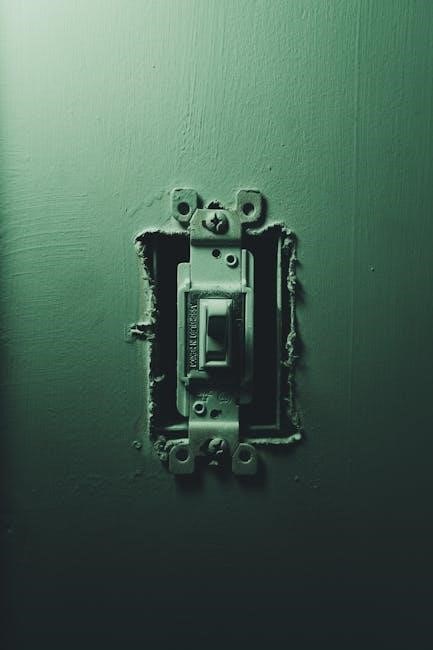
Common Mistakes to Avoid
Common errors include incorrect wire connections‚ overloading the dimmer‚ and ignoring safety protocols. Always follow the wiring diagram and ensure compatibility with your lighting fixtures to avoid issues.
5.1 Incorrect Wire Connections
Incorrect wire connections are a common mistake when installing a 3-way dimmer switch. Misconnecting the traveler wires or the load and line wires can lead to malfunction or complete loss of control. Always ensure the black wire is connected to the load‚ the red wires to the travelers‚ and the green wire to the ground. Failure to follow the wiring diagram can result in erratic dimming or safety hazards. Double-check connections before powering the circuit to avoid damage or electrical issues.
5.2 Overloading the Dimmer Switch
Overloading a 3-way dimmer switch is a serious issue that can lead to overheating‚ damage‚ or even electrical fires. Ensure the total wattage of the connected lights does not exceed the dimmer’s rated capacity. Calculating the combined wattage of all fixtures is crucial. Exceeding the recommended load can cause the dimmer to malfunction or overheat. Always follow the manufacturer’s guidelines and refer to the wiring diagram for proper installation. Selecting the correct dimmer size based on the total load ensures safe and efficient operation‚ preventing potential hazards and extending the lifespan of the switch.
5.3 Ignoring Safety Protocols
Neglecting safety protocols when installing a 3-way dimmer switch can result in electrical shocks‚ fires‚ or fatal injuries. Always de-energize the circuit before starting work to ensure safety. Failing to turn off the power or verify it with a voltage tester is a common mistake. Proper use of insulated tools and adherence to local electrical codes are essential. Ignoring these precautions can lead to dangerous situations‚ emphasizing the importance of following wiring diagrams and manufacturer instructions carefully. Safety should never be compromised to expedite the installation process.

Troubleshooting
Troubleshooting a 3-way dimmer switch involves identifying common issues like flickering lights or non-responsive controls. Verify wire connections‚ check for overloaded circuits‚ and ensure compatibility with fixtures. Always refer to the wiring diagram for guidance and test components systematically to resolve issues effectively.
6.1 Identifying Common Issues
Common issues with 3-way dimmer switches include flickering lights‚ dimming malfunctions‚ and complete loss of control. These problems often stem from wiring errors or overloaded circuits. Flickering may indicate incompatible fixtures or loose connections. Malfunctions could result from incorrect wire connections or overloading. Always refer to the wiring diagram to ensure proper installation. Testing each component systematically helps pinpoint faults‚ whether it’s a faulty switch‚ incorrect wiring‚ or incompatible lighting. Addressing these issues promptly prevents further complications and ensures reliable performance.
6.2 Diagnosing Faulty Wiring
Diagnosing faulty wiring in a 3-way dimmer switch setup requires careful examination of connections and circuits. Start by verifying the wiring diagram to ensure all wires are correctly placed. Use a voltmeter to check for power at the switch and light fixtures. Common issues include reversed wires‚ loose connections‚ or incorrect wire assignments. Ensure the traveller wires are properly connected between switches. If dimming doesn’t work‚ check for compatibility between the dimmer and light fixtures. Always turn off power before testing to avoid electrical shock or further damage.
6.3 Resolving Dimming Problems
Resolving dimming issues begins with checking the wiring diagram to ensure correct connections. Verify that the dimmer switch is compatible with your light fixtures‚ especially LED and fluorescent bulbs. If lights flicker or dim unevenly‚ inspect for loose wires or overloaded circuits. Ensure the dimmer’s wattage rating matches the total load. Replace faulty components and test the circuit again. If problems persist‚ consult the manufacturer’s guide or seek professional assistance to restore proper dimming functionality and safety.
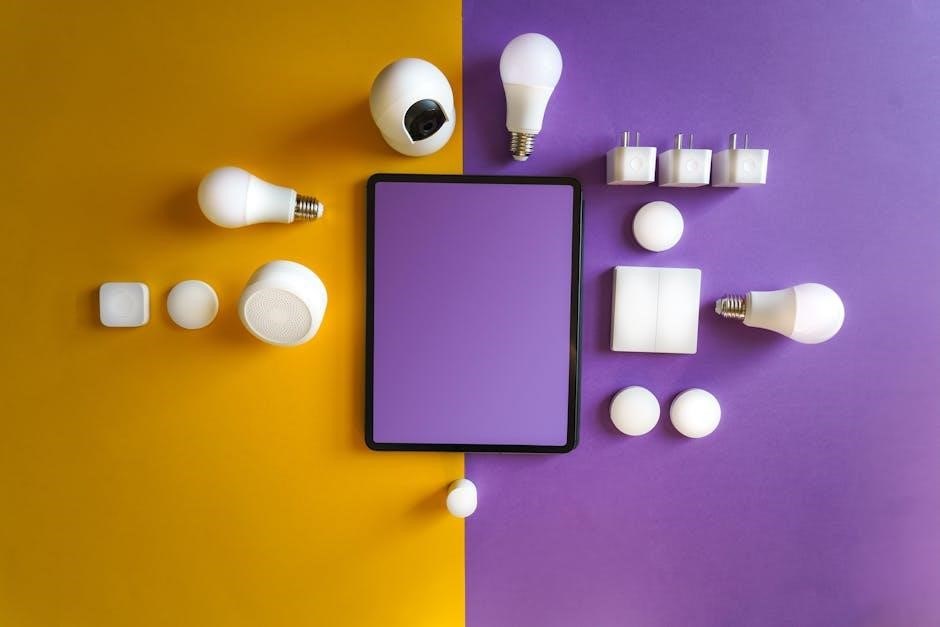
Compatibility with Light Fixtures
Ensure your 3-way dimmer switch is compatible with your lighting fixtures. LED and fluorescent lights require specific dimmers to function properly. Always check ratings and manufacturer guidelines for smooth operation.
7.1 Checking Dimmer Compatibility
Compatibility between the 3-way dimmer switch and your light fixtures is crucial for proper functionality. Most dimmers are designed for incandescent bulbs‚ but LED and fluorescent fixtures require specific dimmers. Always check the manufacturer’s specifications to ensure the dimmer is rated for your fixture type. Using an incompatible dimmer can lead to flickering‚ reduced lifespan‚ or even safety hazards. Refer to the wiring diagram and load calculation guide to confirm compatibility before installation. This step ensures smooth operation and prevents potential damage to your lighting system.
7.2 LED and Fluorescent Lighting Considerations
When using LED or fluorescent lighting with a 3-way dimmer switch‚ ensure compatibility by selecting dimmers specifically designed for these fixtures. Standard dimmers may not work properly‚ leading to flickering or reduced lifespan. Always consult the manufacturer’s guidelines to confirm compatibility. For LEDs‚ choose dimmers with a high enough frequency to prevent buzzing. For fluorescent lights‚ specialized dimming ballasts may be required. Refer to the wiring diagram to ensure proper connections. This step prevents potential issues and ensures optimal performance of your lighting system.
7.3 Specialized Dimming Requirements
Certain lighting systems require specialized dimming setups. For instance‚ low-voltage fixtures may need specific dimmers compatible with their transformers. Smart home systems often require dimmers with wireless connectivity. Always check the manufacturer’s specifications to ensure compatibility. Refer to the wiring diagram for correct connections‚ as improper setup can lead to malfunction. Using the right dimmer enhances performance and longevity‚ ensuring smooth operation and energy efficiency. Proper installation is crucial for maintaining system reliability and safety.
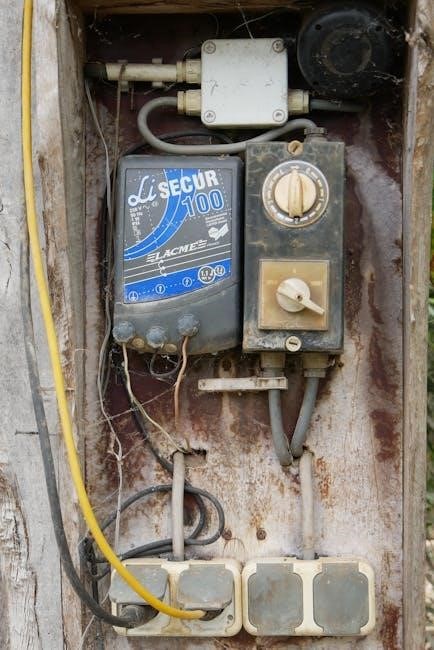
Load Calculation and Dimmer Selection
Accurate load calculation ensures proper dimmer selection. Calculate total wattage of controlled fixtures and choose a dimmer rated for the load. Never exceed 80% of the rated capacity to prevent overheating.
8.1 Calculating Total Wattage
To calculate the total wattage‚ sum the watts of all fixtures controlled by the dimmer. For example‚ if you have three 60W bulbs‚ the total is 180W. Ensure the dimmer’s rating exceeds this total. For compatibility‚ check the dimmer’s maximum load capacity‚ typically 600W or 1000W. Exceeding this can cause overheating or damage. Always consider the number of lamps per fixture and their individual wattage to ensure accurate calculation. This step is crucial for safe and efficient dimmer operation‚ preventing potential electrical issues.
8.2 Choosing the Right Dimmer Size
Selecting the correct dimmer size is vital for safe and efficient operation. Dimmers are rated by wattage‚ with common ratings including 600W‚ 800W‚ and 1000W. Calculate the total wattage of all fixtures the dimmer will control and ensure the dimmer’s rating exceeds this load. Never exceed 80% of the dimmer’s rated capacity to prevent overheating. Consider the type of lighting‚ as LED and fluorescent bulbs may require specific dimmer compatibility. Always consult the wiring diagram to match the dimmer size with your electrical setup‚ ensuring optimal performance and safety.
8.3 Ensuring Load Compatibility
Ensuring load compatibility is crucial for proper dimmer function. Verify that the dimmer’s wattage rating matches the total load of the connected fixtures. For LED and fluorescent lights‚ use dimmers specifically designed for these bulb types‚ as standard dimmers may not work. Always check the manufacturer’s guidelines for compatibility. Calculate the total wattage of all fixtures and ensure it does not exceed the dimmer’s capacity. Avoid using non-dimmable bulbs with dimmer switches‚ as this can cause malfunction or damage. Proper load compatibility ensures safe and efficient operation of your lighting system.
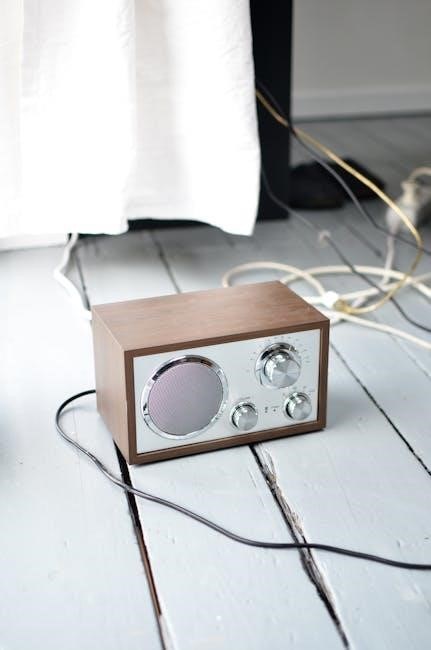
Advanced Configurations
Advanced configurations involve wiring multiple dimmers and integrating smart home systems. This setup allows for seamless control of lighting through voice commands or smartphone apps‚ enhancing convenience and automation.
9.1 Wiring Multiple Dimmers
Wiring multiple dimmers requires careful planning to ensure proper control and load distribution. Each dimmer must be connected to the correct wires‚ with the green wire grounded and the red wires serving as travelers. The black wire connects to the power source or load. Using a wiring diagram PDF can simplify the process‚ ensuring all connections are accurate. Load calculations are critical to avoid overloading‚ and compatibility with fixtures must be verified. Proper wiring ensures smooth dimming and prevents electrical issues‚ making it essential to follow safety guidelines and manufacturer instructions.
9.2 Integrating Smart Home Systems
Integrating 3-way dimmer switches with smart home systems enhances lighting control and automation. Smart dimmers connect to hubs via Wi-Fi or Zigbee‚ enabling voice or app control. Installation requires wiring diagrams to ensure compatibility and proper connections. Load calculations and dimmer ratings must match fixture requirements. Advanced features like scene setting and energy monitoring add convenience. Compatibility checks with existing systems are crucial for seamless integration‚ ensuring reliable performance and maximizing smart home benefits while maintaining safety and efficiency.
9.3 Customizing Dimming Levels
Customizing dimming levels with a 3-way dimmer switch offers precise lighting control‚ tailored to any setting. By adjusting the dimmer’s potentiometer or using smart features‚ users can preset brightness levels. Wiring diagrams guide connections for advanced setups‚ ensuring smooth operation. LEDs and compatible fixtures benefit most‚ with dimming ranges from 0-100%. Regular maintenance ensures optimal performance‚ while compatibility checks prevent issues. Customization enhances ambiance and functionality‚ making spaces adaptable for various activities while maintaining energy efficiency and extending bulb life. Proper installation and setup are key to achieving desired dimming effects.
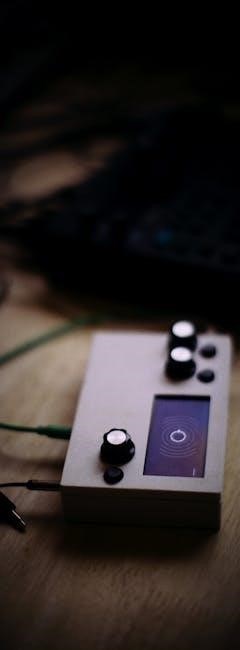
Maintenance and Repair
Regular maintenance and prompt repair ensure the longevity of your 3-way dimmer switch. Inspect wires‚ clean contacts‚ and replace worn parts. Follow wiring diagrams for accurate troubleshooting‚ ensuring safe and efficient operation while preventing potential hazards. Proper care extends the switch’s lifespan and maintains reliable control over your lighting system. Addressing issues early avoids more complex and costly fixes down the line‚ ensuring consistent performance and safety. Always refer to manufacturer guidelines for specific maintenance recommendations tailored to your dimmer switch model. This approach guarantees optimal functionality and user satisfaction.
10.1 Regular Maintenance Tips
Regular maintenance is crucial to ensure the longevity and efficiency of your 3-way dimmer switch. Start by inspecting the wiring and connections‚ ensuring they are secure and free from corrosion. Clean the switch contacts periodically with a soft brush or alcohol wipe to prevent dust buildup‚ which can cause irregular dimming. Check for loose screws or terminals and tighten them if necessary. Additionally‚ review the wiring diagram to confirm all connections are correct and have not been altered over time. Replace any worn-out components immediately to avoid electrical issues. Regular maintenance not only prevents potential hazards but also ensures smooth dimming operation and energy efficiency. By following these simple tips‚ you can extend the life of your dimmer switch and maintain optimal performance. Always turn off the power supply before performing any maintenance tasks to ensure safety.
10.2 Repairing a Faulty Dimmer
If your 3-way dimmer switch stops working‚ it’s important to diagnose the issue before attempting repairs. Start by checking the wiring diagram to ensure all connections are correct. Verify that the dimmer is compatible with your light fixtures‚ as incompatibility can cause malfunction. If the dimmer fails to turn on‚ inspect the circuit for power using a multimeter. Check for loose connections or damaged wires‚ and replace any faulty components. If the dimmer is damaged‚ consider replacing it with a new one‚ ensuring it matches the load requirements. Always disconnect power before starting any repair work to ensure safety. By addressing the issue promptly‚ you can restore proper functionality to your lighting system.
10.3 Upgrading to Newer Models
Upgrading to a newer 3-way dimmer switch model can enhance functionality and energy efficiency. Newer models often support advanced features like smart home integration and improved dimming capabilities. When upgrading‚ ensure the new dimmer is compatible with your existing lighting fixtures and wiring configuration. Always refer to the wiring diagram for guidance. Check the load capacity and ensure the dimmer supports your light types‚ such as LED or fluorescent. Proper installation is crucial for optimal performance and safety. Upgrading can also reduce energy consumption and extend bulb life‚ making it a worthwhile investment.
Mastering the 3-way dimmer switch wiring diagram empowers you to enhance your home’s lighting system safely and efficiently. Proper installation ensures optimal performance and energy savings‚ while understanding compatibility and load calculations prevents potential issues. By following the guidelines and troubleshooting tips outlined‚ you can enjoy a seamless dimming experience. Remember‚ safety and adherence to wiring best practices are paramount for long-term reliability and functionality of your lighting setup.
11.1 Summary of Key Points
Understanding the 3-way dimmer switch wiring diagram is crucial for successful installation. Proper wiring ensures safe and efficient control of lighting fixtures. Always follow safety protocols‚ calculate loads accurately‚ and verify compatibility with fixtures. Regular maintenance and troubleshooting can prevent common issues. Dimmer switches offer energy savings and enhanced ambiance. Refer to diagrams for clear connections‚ and seek professional help if needed. By adhering to these guidelines‚ you can enjoy optimal performance and reliability from your lighting system.
11.2 Final Tips for Successful Installation
Always turn off power before starting work and verify circuit de-energization. Use the correct tools and follow the wiring diagram precisely. Ensure the dimmer switch is compatible with your fixtures and calculate the total load to avoid overloading. Double-check all wire connections and secure them firmly. Test the dimmer after installation to confirm proper functioning. If unsure‚ consult a professional to ensure safety and efficiency. Proper installation enhances performance‚ energy savings‚ and longevity of your lighting system.
11.3 Encouragement for Further Learning
Expanding your knowledge of 3-way dimmer switch wiring can open doors to more complex projects. Explore resources like detailed wiring diagrams and video tutorials to deepen your understanding. Practice troubleshooting common issues and experiment with advanced configurations‚ such as smart home integrations. Continuous learning enhances your DIY skills and confidence. For further insights‚ explore recommended reading materials and online courses. Engaging with electrical communities or seeking professional guidance can also broaden your expertise‚ ensuring you stay updated on the latest techniques and safety standards.

Additional Resources
For deeper understanding‚ explore wiring diagrams‚ tutorials‚ and forums. Manufacturer websites like Lutron offer detailed guides. PDF resources and video tutorials provide hands-on learning. Visit Ask-The-Electrician for expert advice.
12.1 Recommended Reading Materials
For comprehensive understanding‚ refer to Lutron’s official 3-way dimmer switch guides and wiring diagrams. The detailed Ask-The-Electrician guide provides step-by-step instructions. Download the 3-Way Dimmer Switch Installation Handbook for practical tips. Explore wiring diagrams PDFs from trusted manufacturers. Additionally‚ video tutorials on YouTube offer visual guidance. These resources ensure safe and effective installation‚ covering both basic and advanced configurations.
12.2 Online Tools and Tutorials
Utilize online wiring simulators to practice configurations. Websites like Ask-The-Electrician offer interactive tools. YouTube tutorials provide hands-on guidance. Manufacturer sites‚ such as Lutron‚ feature detailed wiring diagrams and instructional videos. Forums like Reddit’s DIY community share real-world experiences. These resources aid in mastering 3-way dimmer switch installation and troubleshooting‚ ensuring confidence and accuracy in your projects.
12.3 Professional Assistance Options
For complex installations‚ consider licensed electricians who specialize in residential wiring. Many offer consultation services to guide DIY projects. Home improvement stores often provide workshops. Online forums connect you with experts for personalized advice. These resources ensure your 3-way dimmer switch is installed safely and efficiently‚ adhering to local codes and best practices.

